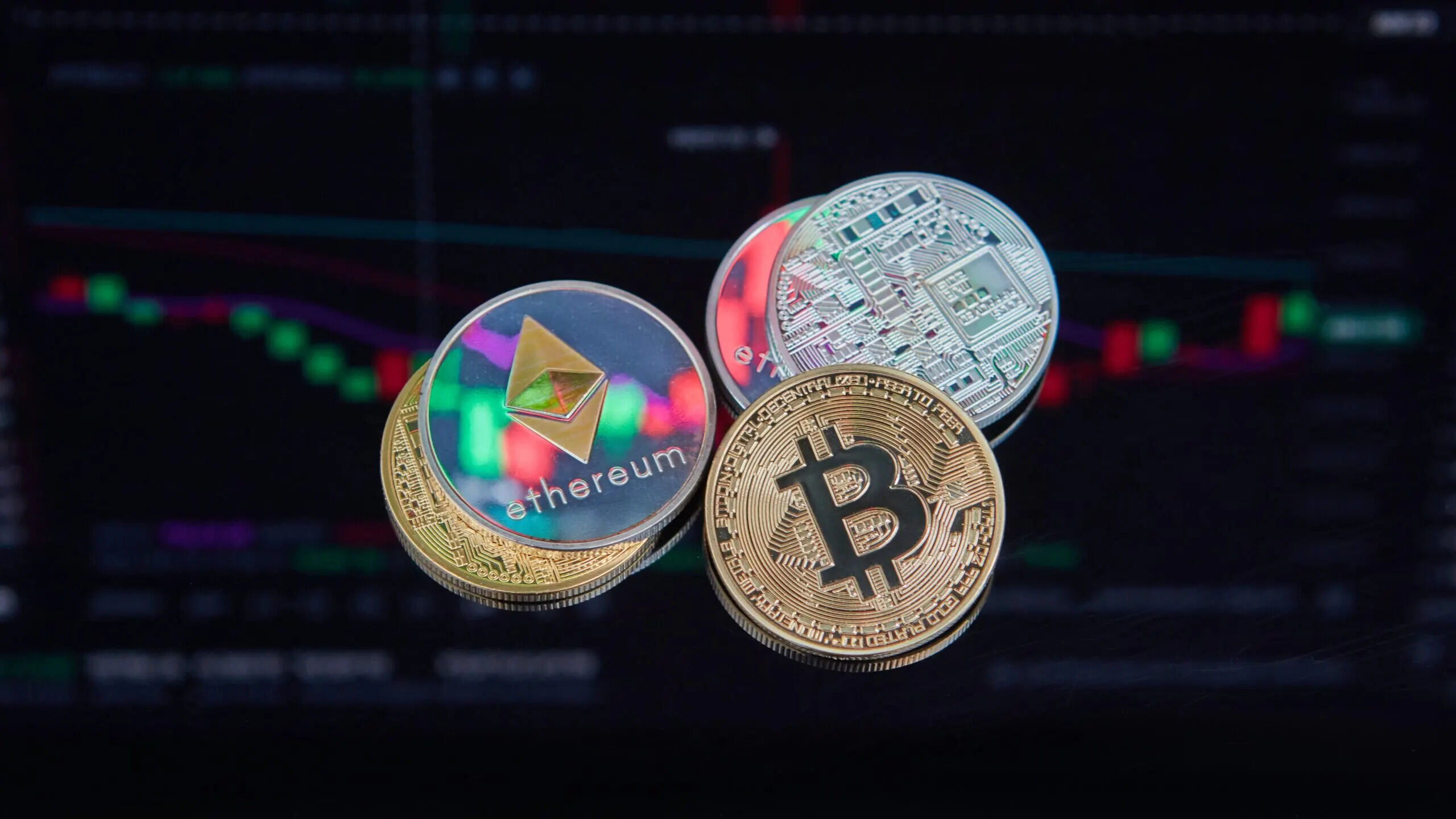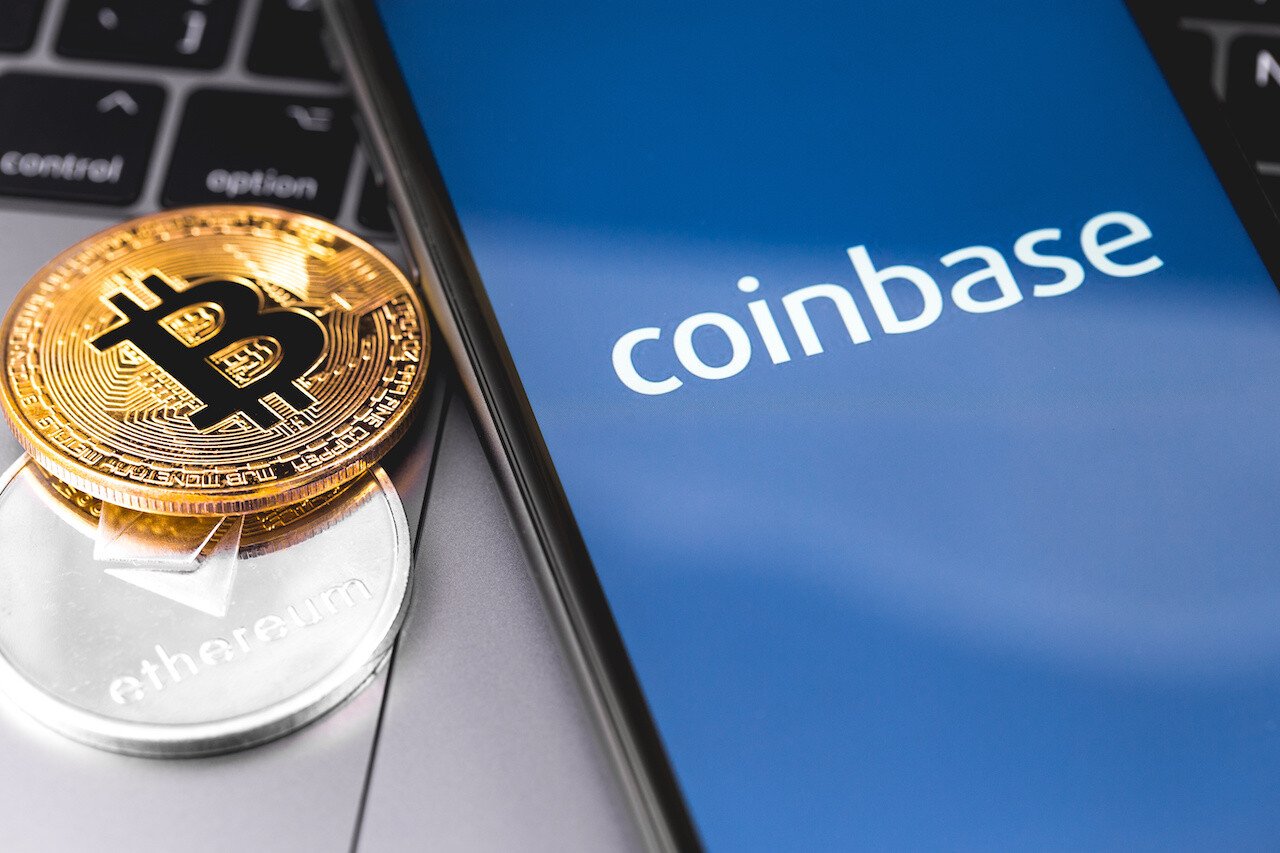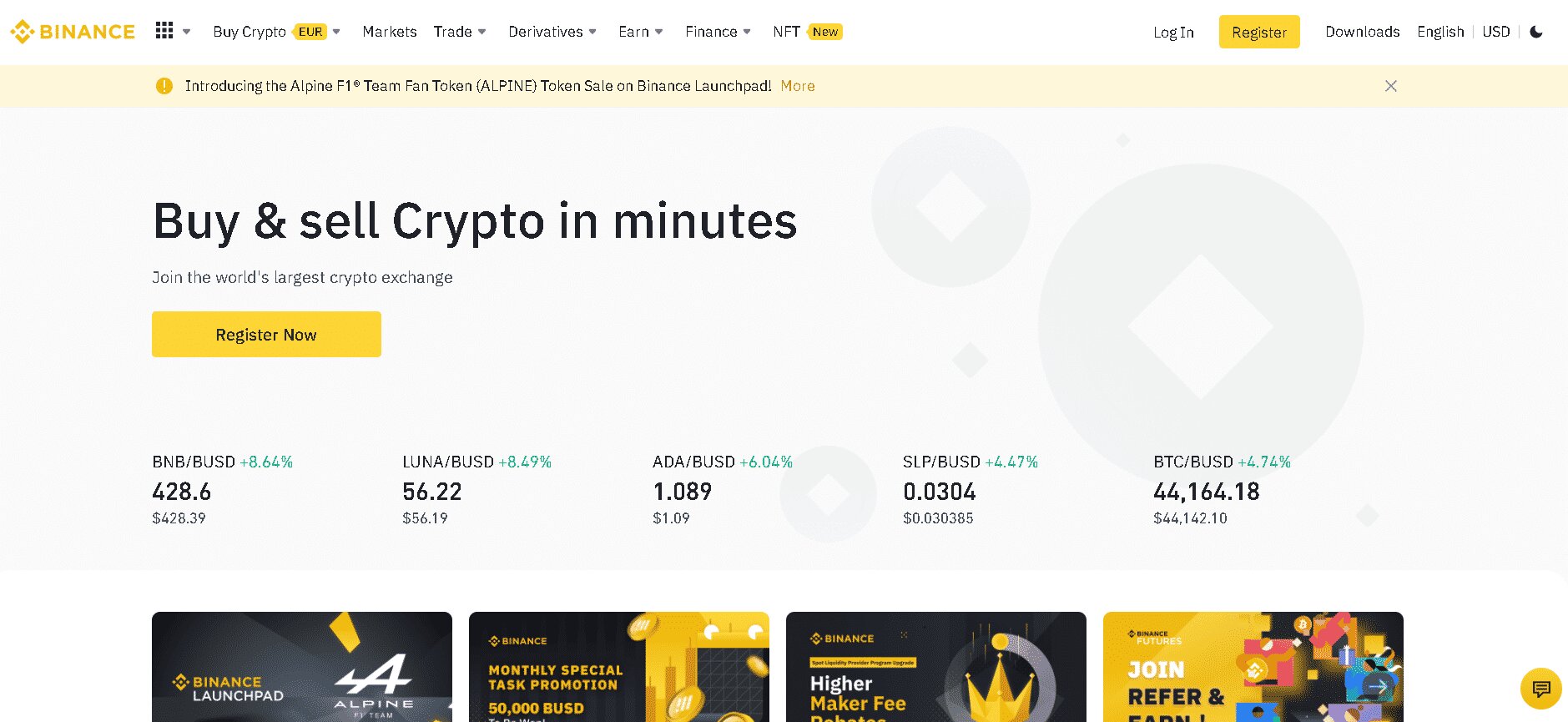Introduction
Welcome to the exciting world of cryptocurrency! Bitcoin and Ethereum have emerged as two of the most popular cryptocurrencies, and many people are eager to get involved. Whether you’re interested in investing, trading, or simply using these digital currencies for transactions, this article will guide you through the process of buying Bitcoin and Ethereum.
Bitcoin, often referred to as digital gold, was the first cryptocurrency. It has gained significant recognition and is widely accepted as a decentralized form of currency. Ethereum, on the other hand, is not just a digital currency, but also a platform that enables developers to build and deploy smart contracts and decentralized applications (DApps).
Before diving into the buying process, it is important to understand that cryptocurrencies are stored in a digital wallet, which is like a virtual bank account. You will also need to choose a reliable cryptocurrency exchange, as this is where you will make your purchases.
In this guide, we will walk you through the steps to set up a digital wallet, choose an exchange, create an account, verify your identity, fund your account, and finally, place an order to buy Bitcoin and Ethereum. We will also give you some tips on storing your cryptocurrencies securely.
It’s important to note that the cryptocurrency market is highly volatile, meaning that prices can fluctuate greatly in a short period. As an investor or trader, it’s crucial to stay informed and make informed decisions based on thorough research.
Now, let’s begin our journey into the world of Bitcoin and Ethereum, where you’ll learn how to buy, sell, and store these digital assets safely and securely.
Understanding Bitcoin and Ethereum
Before delving into the process of buying Bitcoin and Ethereum, it’s important to have a basic understanding of these cryptocurrencies and what sets them apart.
Bitcoin, created in 2009 by an anonymous individual or group known as Satoshi Nakamoto, was the first decentralized digital currency. It operates on a technology called blockchain, which is a distributed ledger that records all transactions and ensures their security. The supply of Bitcoin is limited to 21 million coins, making it a finite asset.
Ethereum, introduced in 2015 by Vitalik Buterin, is not solely a digital currency but also a platform that facilitates smart contracts and decentralized applications. While Bitcoin primarily serves as a digital store of value and medium of exchange, Ethereum’s blockchain enables developers to build and deploy their own applications and tokens.
Both Bitcoin and Ethereum have their own native tokens. Bitcoin’s token is called “Bitcoin” (BTC), while Ethereum’s token is called “Ether” (ETH). BTC and ETH can be bought, sold, and stored in digital wallets.
Bitcoin is often viewed as a digital gold and is considered a more stable and established cryptocurrency. It has gained significant recognition and acceptance among individuals and businesses worldwide. Bitcoin is perceived as a hedge against traditional financial systems and inflation.
Ethereum, on the other hand, is known for its potential to revolutionize various industries through smart contracts. Smart contracts are self-executing contracts with the terms of the agreement directly written into code. They automatically execute actions based on predefined conditions, eliminating the need for intermediaries.
It’s important to note that the prices of Bitcoin and Ethereum are subject to significant volatility. The value of these cryptocurrencies can fluctuate dramatically in a short period, influenced by factors such as supply and demand, market sentiment, regulatory developments, and technological advancements.
Understanding the fundamentals of Bitcoin and Ethereum is crucial before entering the cryptocurrency market. It allows you to make informed decisions and grasp the potential of these innovative digital assets. Now that we have laid the foundation, let’s move on to setting up a digital wallet to store your Bitcoin and Ethereum securely.
Setting Up a Digital Wallet
A digital wallet is essential for securely storing your Bitcoin and Ethereum. It functions like a bank account, allowing you to send, receive, and store your cryptocurrencies.
There are various types of digital wallets, including desktop wallets, mobile wallets, web wallets, and hardware wallets. Each has its own advantages in terms of accessibility and security.
Desktop wallets are software applications that you download and install on your computer. They offer control over your private keys, but it’s crucial to ensure your computer is free from malware or viruses that could compromise your wallet’s security.
Mobile wallets, as the name suggests, are applications that you install on your smartphone. They provide convenience and accessibility, allowing you to manage your cryptocurrencies on the go. However, it’s important to keep your device secure and enable additional security measures like PIN codes or biometric authentication.
Web wallets, also known as online wallets, are accessed through a web browser. They are convenient but generally considered less secure compared to other wallet types. It’s crucial to choose a reputable and trustworthy web wallet provider to minimize the risk of hacks or phishing attacks.
Hardware wallets are physical devices designed specifically for storing cryptocurrencies. They offer the highest level of security as they store your private keys offline. Hardware wallets are immune to malware and provide an extra layer of protection against threats.
When choosing a digital wallet, consider factors such as security, ease of use, supported cryptocurrencies, and additional features like two-factor authentication.
Popular digital wallet options for Bitcoin and Ethereum include:
- Bitcoin Core Wallet: A free and open-source desktop wallet for Bitcoin. It offers full control over your private keys.
- MyEtherWallet: A web-based wallet specifically for Ethereum and ERC-20 tokens. It allows you to generate and control your wallet’s private keys.
- Trezor: A hardware wallet that supports both Bitcoin and Ethereum. It provides enhanced security by keeping your private keys offline.
Once you have chosen a suitable digital wallet, follow the instructions provided by the wallet provider to set it up. This usually involves creating a strong password and securely backing up your wallet’s recovery phrase or seed. Remember to keep your private keys and recovery phrase offline and in a safe place.
Now that you have a digital wallet, it’s time to choose a cryptocurrency exchange where you can buy Bitcoin and Ethereum. We’ll explore this in the next section.
Choosing a Bitcoin and Ethereum Exchange
When it comes to buying Bitcoin and Ethereum, you need to choose a reliable and trustworthy cryptocurrency exchange. An exchange is a platform where you can buy, sell, and trade cryptocurrencies.
There are several factors to consider when selecting a cryptocurrency exchange:
- Reputation and Security: Look for exchanges with a good reputation and solid security measures. Research the exchange’s history, customer reviews, and any past security incidents. Choose exchanges that employ strong encryption and two-factor authentication for added security.
- Licensing and Regulation: Check if the exchange is licensed and regulated by a reputable financial authority. This ensures that the exchange adheres to certain standards and regulations, protecting your interests as a user.
- Supported Currencies: Ensure that the exchange supports both Bitcoin and Ethereum. It’s also beneficial if the exchange offers a wide range of other cryptocurrencies in case you decide to diversify your portfolio in the future.
- Liquidity: Liquidity refers to the ability to buy or sell assets without causing significant price fluctuations. Choose exchanges with high liquidity to ensure smooth transactions and fair market prices.
- Payment Methods: Consider the available payment methods supported by the exchange. Look for options that are convenient for you, whether it’s bank transfers, credit/debit cards, or other payment providers.
- User-Friendly Interface: A user-friendly interface makes it easier to navigate the exchange and execute trades efficiently. Look for exchanges with intuitive designs and clear instructions, especially if you’re a beginner.
- Fees: Exchanges charge fees for trades, deposits, and withdrawals. Compare the fee structures of different exchanges and choose one that offers competitive rates and transparent fee policies.
- Customer Support: Check the availability and responsiveness of customer support. Look for exchanges that offer multiple support channels and have a history of prompt and helpful responses to user inquiries or issues.
Some popular and reputable cryptocurrency exchanges that support Bitcoin and Ethereum include:
- Coinbase: A renowned and user-friendly exchange that supports both Bitcoin and Ethereum. It offers a straightforward interface, high security, and convenient payment options.
- Binance: A widely-used exchange that provides a wide range of cryptocurrencies, including Bitcoin and Ethereum. Binance offers advanced trading features and has a large user base, ensuring high liquidity.
- Gemini: A regulated exchange that focuses on security and compliance. It supports Bitcoin and Ethereum and provides a simple and intuitive trading experience.
Remember, it’s always advisable to do your own research and choose an exchange that aligns with your specific needs and preferences. Once you have selected an exchange, you’ll need to create an account, which we will explore in the next section.
Creating an Account on an Exchange
Now that you’ve chosen a cryptocurrency exchange, it’s time to create an account. The process may vary slightly depending on the exchange you selected, but the general steps remain similar.
Here’s a step-by-step guide on how to create an account on a cryptocurrency exchange:
- Visit the Exchange’s Website: Go to the official website of the exchange you selected.
- Click on “Sign Up” or “Create Account”: Look for the option to create a new account on the website’s homepage or navigation menu.
- Provide Your Email and Password: Enter your email address and create a strong, unique password. Make sure to choose a password that is not easily guessable and consider using a password manager to securely store it.
- Complete the Verification Process: Some exchanges require you to verify your email address by clicking on a verification link sent to your inbox. Follow the instructions provided in the email to complete the verification process.
- Provide Additional Personal Information: Depending on the exchange’s requirements, you may need to provide additional personal information, such as your full name, date of birth, and residential address. This step is often necessary for compliance with Know Your Customer (KYC) and Anti-Money Laundering (AML) regulations.
- Set Up Two-Factor Authentication (2FA): Enable two-factor authentication for an extra layer of security. This typically involves linking your exchange account to a 2FA app, such as Google Authenticator or Authy. The app will generate a unique code that you need to enter during the login process.
- Read and Accept the Terms of Service: Carefully review the exchange’s terms of service and privacy policy. If you agree to the terms, check the box indicating your acceptance before proceeding.
- Submit Your Information: Once you have provided all the required information, click on the “Submit” or “Create Account” button to complete the account creation process.
After creating your account, you may need to wait for the exchange to verify your personal information. Verification times can vary, ranging from a few minutes to several days, depending on the exchange’s policies and the volume of new user registrations.
It’s important to note that some exchanges may require enhanced verification for higher account limits or advanced trading features. This may involve submitting additional documentation, such as a government-issued ID or proof of address.
Once your account is verified, you are ready to fund it and start buying Bitcoin and Ethereum. But before that, you may need to complete the identity verification process, which we will cover in the next section.
Verifying Your Identity
Many cryptocurrency exchanges require users to verify their identity before allowing them to trade or make significant transactions. This process, known as identity verification or KYC (Know Your Customer), is a standard practice to ensure compliance with regulations and prevent fraud or illicit activities.
Here are the general steps involved in verifying your identity on a cryptocurrency exchange:
- Access the Account Verification Section: Log in to your exchange account and find the section dedicated to account verification or KYC.
- Provide Personal Information: Fill in the required information, which usually includes your full name, residential address, date of birth, and sometimes your nationality or social security number.
- Upload Identification Documents: Most exchanges require you to upload scanned or photographed copies of government-issued identification documents. This may include your passport, driver’s license, or national ID card. In some cases, you may also need to provide a selfie or a photo of yourself holding your ID.
- Submit the Verification Request: Once you have provided all the necessary information and documents, submit your verification request. The exchange will review and verify your identity.
- Wait for Verification: The verification process can take some time. The duration varies from exchange to exchange, but it can range from a few minutes to a few days. During this period, avoid making any transactions that require higher account limits or advanced trading features.
- Receive Verification Confirmation: Once your identity is verified, you will receive confirmation from the exchange. You can now access the full functionality of the platform and proceed with buying Bitcoin and Ethereum or engaging in other transactions.
It’s important to note that the identity verification process is there to ensure the security and legitimacy of the cryptocurrency exchange. While it may add an extra step, it helps to protect both users and the exchange from potential risks.
Keep in mind that different exchanges may have varying verification requirements and processes. Some may have higher levels of verification for increased account limits, while others may offer different tiers of verification based on your trading needs.
Remember to securely store your identification documents and any sensitive information related to your exchange account. It’s essential to take precautions to safeguard your personal information and protect yourself from identity theft or unauthorized access to your account.
Once your identity is verified, you can proceed to fund your account and start buying Bitcoin and Ethereum. We will cover the funding process in the next section.
Funding Your Account
Now that you have created an account and completed the verification process on a cryptocurrency exchange, it’s time to fund your account. Funding your account allows you to deposit money or cryptocurrencies that you can later use to buy Bitcoin and Ethereum.
The process of funding your account may vary depending on the exchange you are using, but the general steps are as follows:
- Access the Deposit or Funding Section: Log in to your exchange account and navigate to the section dedicated to deposits or funding.
- Select the Currency: Choose the currency you want to deposit into your account. This can be fiat currency (such as USD, EUR, or GBP) or another cryptocurrency that you already own.
- Follow the Deposit Instructions: Depending on the chosen currency, the exchange will provide instructions on how to deposit funds. This may involve providing bank account details for fiat currency deposits or generating a unique wallet address for cryptocurrency deposits.
- Initiate the Deposit: Follow the provided instructions to initiate the deposit from your bank account or transfer the specified amount of cryptocurrency to the provided wallet address. Make sure to double-check the accuracy of the information before proceeding.
- Wait for Confirmation: It may take some time for the deposit to be confirmed and reflected in your exchange account. The duration depends on factors such as network congestion (in the case of cryptocurrency deposits) and the processing time of your bank (for fiat currency deposits).
- Confirm Deposit Completion: Once the deposit is confirmed, you will receive a notification or see the updated balance in your exchange account. You can now proceed to use these funds to buy Bitcoin and Ethereum.
It’s important to check the fees associated with deposits on the exchange. Different exchanges may have varying fee structures, and it’s crucial to understand any fees that may be deducted from your deposited amount.
Furthermore, it’s advisable to start with a smaller deposit amount for your first transaction to familiarize yourself with the funding process and ensure that everything is working smoothly.
Keep in mind that cryptocurrency transactions are irreversible. Once you initiate a deposit, it cannot be canceled or reversed. Therefore, it’s essential to verify all details and ensure that you are depositing funds into the correct account.
Now that your account is funded, you are all set to make your first purchase of Bitcoin and Ethereum. In the next sections, we will guide you on how to place an order to buy these cryptocurrencies and store them securely.
Placing an Order to Buy Bitcoin
Now that you have a funded account on a cryptocurrency exchange, you can proceed to place an order to buy Bitcoin. Placing an order on an exchange allows you to specify the amount of Bitcoin you want to purchase and at what price.
Here are the general steps to place an order to buy Bitcoin:
- Access the Trading Interface: Log in to your exchange account and navigate to the trading interface. This is where you can place buy and sell orders.
- Select the Bitcoin Market: Look for the Bitcoin market or trading pair. It is usually represented as BTC/USD or BTC/EUR, indicating the trading of Bitcoin against fiat currency.
- Choose the Buy Option: Within the Bitcoin market, choose the “Buy” option to initiate a purchase order. You will be presented with different order types, such as market order or limit order.
- Specify the Order Details: Depending on the order type, specify the amount of Bitcoin you want to buy and the price at which you are willing to buy. For a market order, you simply specify the amount you want to buy, and the order will be executed at the current market price. For a limit order, you can set a specific price at which you want to buy Bitcoin, and the order will be executed only when the market reaches that price.
- Review and Place the Order: Before placing the order, review the details, including the total cost and any associated fees. Once you are satisfied, click on the “Place Order” or similar button to submit your buy order.
- Wait for Order Execution: After placing the buy order, it may take a few moments for the order to be executed. This depends on the market liquidity and the price you specified. Once the order is filled, you will see the purchased Bitcoin in your exchange account’s balance.
It’s important to note that the process may differ slightly depending on the exchange’s trading platform. Some exchanges offer more advanced features, such as stop-loss orders or conditional orders, that allow you to set specific conditions for executing the order.
Remember to carefully monitor your orders and be aware of the market conditions. Prices in the cryptocurrency market can be highly volatile, and it’s essential to take into account factors such as market trends, order book depth, and trading volumes before placing your buy order.
By placing a buy order, you acquire ownership of Bitcoin, which will be stored in your exchange account. However, it’s generally recommended to transfer your Bitcoin to a secure external wallet for better control and security. We will discuss how to store Bitcoin and Ethereum securely in the next section.
Placing an Order to Buy Ethereum
Once you have familiarized yourself with placing an order to buy Bitcoin, you can now proceed to place an order to buy Ethereum. Ethereum, the second-largest cryptocurrency by market capitalization, can be purchased using a similar process on your chosen cryptocurrency exchange.
Here are the general steps to place an order to buy Ethereum:
- Access the Trading Interface: Log in to your cryptocurrency exchange account and navigate to the trading interface or markets section.
- Select the Ethereum Market: Look for the Ethereum market or trading pair. It is usually represented as ETH/USD or ETH/BTC, indicating the trading of Ethereum against either fiat currency or Bitcoin.
- Choose the Buy Option: Within the Ethereum market, select the “Buy” option to initiate a purchase order. You will be presented with different order types, such as market order or limit order, just like with buying Bitcoin.
- Specify the Order Details: Depending on the order type, specify the amount of Ethereum you want to buy and the price at which you are willing to buy. For a market order, you simply specify the amount you want to buy, and the order will be executed at the current market price. For a limit order, you can set a specific price at which you want to buy Ethereum, and the order will be executed only when the market reaches that price.
- Review and Place the Order: Review the order details, including the total cost and any associated fees. Once you are satisfied, click on the “Place Order” or a similar button to submit your buy order for Ethereum.
- Wait for Order Execution: After placing the buy order, wait for the order to be executed. The execution time may vary depending on factors such as market liquidity and the price you specified. Once the order is filled, you will see the purchased Ethereum in your exchange account’s balance.
Similarly to Bitcoin, Ethereum’s price can be volatile, so it’s important to stay informed about market trends and consider factors like order book depth and trading volumes before placing your buy order.
While the newly acquired Ethereum will be stored in your exchange account, it is generally recommended to transfer it to a secure external wallet for enhanced control and security. Storing your Ethereum securely will be explored in the next section of this article.
Storing Bitcoin and Ethereum Safely
After purchasing Bitcoin and Ethereum, it’s important to store them securely to protect your investment. While cryptocurrency exchanges provide convenient storage, they can be vulnerable to hacking and other security breaches. Storing your cryptocurrencies in a secure external wallet gives you more control over your funds and reduces the risk of theft.
Here are a few options for storing Bitcoin and Ethereum safely:
- Hardware Wallets: Consider using a hardware wallet, such as Ledger or Trezor. These physical devices store your private keys offline, offering a high level of security. Hardware wallets are resistant to hacking and provide a secure way to store your cryptocurrencies.
- Desktop Wallets: Desktop wallets, like Exodus or Electrum, are software applications that you install on your computer. They give you control over your private keys while keeping them on your device. Ensure your computer is protected with up-to-date antivirus software and follow best practices for online security.
- Mobile Wallets: Mobile wallets, such as Mycelium or Trust Wallet, are apps installed on your smartphone. They offer convenience and accessibility, allowing you to manage your Bitcoin and Ethereum on the go. Set up extra security measures, such as PIN codes or biometric authentication, on your device to protect your wallet.
- Paper Wallets: Paper wallets are physical copies of your private key and public address printed on paper. They offer an air-gapped storage solution since they are not connected to the internet. However, paper wallets require extra caution to prevent loss or damage and should be generated securely from a trusted source.
Regardless of the type of wallet you choose, it’s crucial to follow these security practices:
- Backup Your Wallet: Always backup your wallet’s private key or recovery phrase and store it in a safe place. This ensures you can recover your funds if your wallet is lost or damaged.
- Enable Two-Factor Authentication: Wherever possible, enable two-factor authentication (2FA). This provides an additional layer of security by requiring a second verification step, such as a code from a 2FA app, to access your wallet.
- Keep Software Updated: Regularly update your wallet software and operating system to protect against known vulnerabilities. Stay informed about security updates from the wallet provider and apply them promptly.
- Be Wary of Phishing Attempts: Beware of phishing attempts and scams. Ensure you are accessing your wallet through the official website or app and avoid clicking on suspicious links or providing your wallet information to unknown sources.
Remember, owning cryptocurrencies means you are solely responsible for their security. By following these best practices, you can keep your Bitcoin and Ethereum safe and minimize the risk of unauthorized access or loss of funds.
Now that you know how to securely store your cryptocurrencies, let’s explore some additional tips for buying Bitcoin and Ethereum in the next section.
Tips for Buying Bitcoin and Ethereum
Buying Bitcoin and Ethereum can be an exciting and potentially profitable venture. However, it’s important to approach the process with caution and follow these tips to make informed decisions:
- Do Your Research: Take the time to research and understand the fundamentals of Bitcoin and Ethereum. Stay updated on market trends, news, and developments in the cryptocurrency industry. This knowledge will help you make more informed decisions when buying or selling.
- Start with a Small Investment: If you are new to cryptocurrencies, consider starting with a small investment. This allows you to gain experience and understand the market dynamics without risking a substantial amount of capital.
- Diversify Your Portfolio: While Bitcoin and Ethereum are popular choices, consider diversifying your cryptocurrency holdings. Explore other promising projects and invest in a range of cryptocurrencies to spread your risk.
- Set Realistic Goals: Define your investment goals and objectives. Determine whether you are investing for the long term or pursuing short-term trading opportunities. Set realistic expectations and avoid making impulsive decisions based on short-term price fluctuations.
- Use Dollar-Cost Averaging: Rather than investing a lump sum all at once, consider using a strategy called dollar-cost averaging. With this approach, you invest a fixed amount at regular intervals, regardless of the current market price. This helps mitigate the risk of buying at a peak and allows you to accumulate cryptocurrencies gradually.
- Keep Emotions in Check: Cryptocurrency markets can be highly volatile, with prices experiencing significant fluctuations. It’s important to control your emotions and avoid making impulsive decisions based on fear or greed. Stick to your investment strategy and avoid chasing market trends.
- Use Secure Wi-Fi and Devices: When accessing your cryptocurrency exchange account or wallet, ensure you are using a secure Wi-Fi network and trusted devices. Public Wi-Fi networks can be insecure and prone to hacking attempts. Use password-protected Wi-Fi networks and keep your devices up-to-date with the latest security patches.
- Stay Aware of Scams: Be cautious of cryptocurrency-related scams, such as fraudulent investment schemes or phishing attempts. Always verify the authenticity of the platforms, services, and investment opportunities you come across. Be skeptical of promises of guaranteed returns and exercise due diligence before investing your hard-earned money.
Remember, investing in cryptocurrencies carries risks, and the market can be highly volatile. It’s essential to weigh the risks versus potential rewards and make decisions based on thorough research and careful consideration. Keep learning, stay informed, and adapt your strategies as the cryptocurrency landscape evolves.
Congratulations! You now have a solid understanding of the process involved in buying Bitcoin and Ethereum, as well as some valuable tips to guide your cryptocurrency investments. Happy investing and may your journey in the world of cryptocurrencies be a rewarding one!
Conclusion
Congratulations on completing this guide on buying Bitcoin and Ethereum! We have covered crucial steps, from understanding the basics of these cryptocurrencies to selecting an exchange, creating an account, and securely storing your digital assets.
Bitcoin and Ethereum represent exciting opportunities to participate in the world of decentralized finance and invest in innovative technologies. However, it’s important to approach the cryptocurrency market with caution and conduct thorough research before making any investment decisions.
Remember, security is paramount when it comes to handling cryptocurrencies. Utilize secure wallets, enable two-factor authentication, and stay vigilant against potential scams and phishing attempts. Your goal should be to maintain control over your private keys and protect your investments.
Additionally, it’s crucial to stay informed about market trends and developments in the cryptocurrency industry. Markets can be highly volatile, and a sound understanding of the ecosystem will help you make more informed decisions.
As with any investment, it’s important to diversify your cryptocurrency portfolio and set realistic goals. Be patient and avoid being swayed by short-term price fluctuations, as the cryptocurrency market can be highly volatile.
Lastly, always remember that investing in cryptocurrencies carries risks, and it’s advisable to only invest funds that you can afford to lose. Seek advice from financial professionals if needed and continuously educate yourself about the ever-evolving landscape of cryptocurrencies.
With these insights in mind, you are well-equipped to embark on your journey into the world of Bitcoin and Ethereum. May your investments be fruitful, and may you continue to explore and navigate this exciting and dynamic industry with confidence!

























